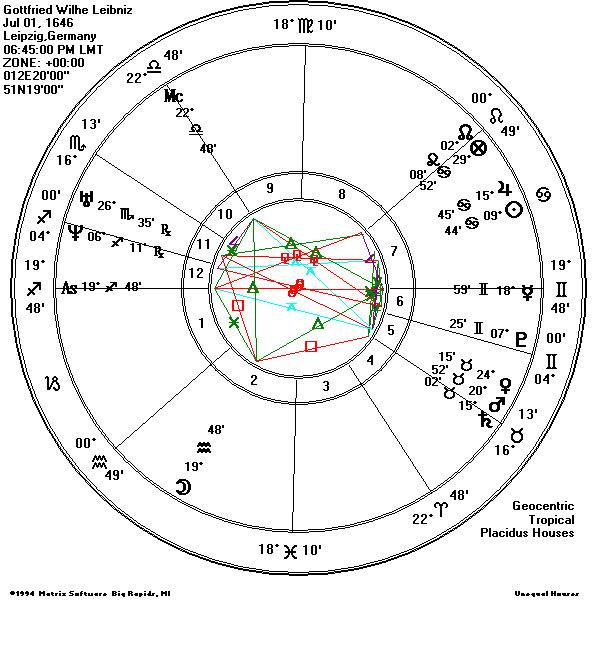As is well known, two largest planets of our solar system, Jupiter and Saturn, exert a markedly different influence on our lives. More than that, these two planets are polar opposites of each other in their influence which is not that surprising considering their symbols i.e., glyphs, since the symbol of Saturn (♄) is the same as Jupiter’s (♃) but turned upside down.
Of course, these are not the only two antipodal planets. Sun and Moon as well as Mars and Venus are other obvious examples. In fact, Jupiter’s immediate antipode is actually Mercury, while Saturn, being a natural contrarian as it is, can be, beside Jupiter, contrasted to most of the planets especially to Sun, Moon and Uranus.
Nevertheless, Jupiter and Saturn, radically different in nature as they are, represent most of opposite terms and words which we often recognize and use. Some of those antonyms are, for example, yes and no, plus and minus, good and bad, happy and sad, rich and poor and et cetera.
Since first is so positive and other so negative in its influence, Jupiter is obviously a planet of optimism while Saturn is a planet of pessimism.
So, in principle, the emphasis and strength of one planet over the other in a given chart will to a large extent indicate whether a person in question have a positive or negative attitude towards life.
For example, if in a given chart signs in which Jupiter have a strong dignity are emphasized, Jupiter is placed in one of those signs or on a potent, angular positions and especially if this planet forms multiple positive aspects towards fast moving, personal planets, a person in question will tend to be overall optimistic.
But, of course, if signs in which Saturn have a strong dignity are emphasized, Saturn is in one of those signs or on angular positions and forms multiple and mostly challenging aspects towards personal planets, a person in question will tend to be a pessimist.
Of all factors mentioned above, aspects that these two planets form towards personal planets are most significant, especially aspects towards the Sun since it represents our overall, general outlook on life and existence and how we “see” and experience the world.
Those who happen to have Sun in connection with Jupiter, especially in conjunction, sextile or trine will tend to see life as a gift, a privilege, an opportunity, something to be appreciated, cherished and grateful for since the world, in their view, is a beautiful place full of opportunities for expression and growth, while those who have Sun in connection with Saturn will be inclined to see life as suffering, a curse, a damnation and as something that must be endured or even denied, rejected and even abandoned since the world is, in their view, a punishment or a “valley of tears” to which we are unjustly condemned.
Since Sun, beside signifying general attitude toward life and the world, also represent fame and recognition, those who are specifically known for, or famous for their optimistic or pessimistic attitude towards existence, should have a significant connection between Sun and Jupiter or Saturn in their charts.
Two German philosophers, Gottfried Wilhelm Leibniz and Arthur Schopenhauer are known as the most prominent exemplars of, what is known as, philosophical optimism/pessimism.
Therefore, their horoscopes can show us whether claims mentioned above are valid or not. Let’s see.

Gottfried Wilhelm Leibniz ( 1.7.1646, 18:45 PM Leipzig) was a German polymath. Besides being a philosopher, he was a mathematician, scientist and diplomat. He is one of the most prominent figures in both the history of philosophy and the history of mathematics. He wrote works on philosophy, theology, ethics, law, history and philology. In addition, he contributed to the field of library science: while serving as overseer of the Wolfenbüttel library in Germany, he devised a cataloging system that would have served as a guide for many of Europe’s largest libraries. Leibniz’s contributions to this vast array of subjects were scattered in various learned journals, in tens of thousands of letters and in unpublished manuscripts.
Sadly, this exceptional man who made major contributions to so many fields is chiefly remembered today, when he is remembered at all, for two reasons. First, he invented the calculus independently, most scholars now agree, of its other inventor Isaac Newton. And second, he authored the only book he published during his lifetime titled “Theodicy”. In that book he made a claim that this world is “the best of all possible worlds.” He asserted that it must be the best possible and most balanced world, because it was created by an all powerful and all-knowing God, who would not choose to create an imperfect world if a better world could be known to him or possible to exist. In effect, apparent flaws that can be identified in this world must exist in every possible world, because otherwise God would have chosen to create the world that excluded those flaws.
For this statement Leibnitz is viewed by philosophers as the preeminent exponent of philosophical optimism.
Of course, the chart of Leibniz looks exactly how the chart of a most famous optimist should look like.

The combination of his Sun sign and Ascendent is already quite revealing. His Sun is placed in the sign of Cancer, which is the sign of Jupiter’s exaltation, while his ASC is in Sagittarius, the sign which is ruled by Jupiter. Moreover, his Sun which is, by the way, on a degree of Sagittarius is in conjunction with Jupiter in Cancer. And furthermore, Jupiter is not only exalted, but is on the exact degree of its exaltation. By the way, both planets are in the 7th house, which is one of the angular houses.
This Sun- Jupiter conjunction also perfectly describes his statement on which his reputation of the great optimist rests, that this world is the best (Sun) of all possible (Jupiter) worlds.
Also, this conjunction perfectly describes his father (Sun) who was a professor (Sun) of moral philosophy (Jupiter). His father, by the way, died when Leibniz was 6 years old. Sun-Jupiter conjunction doesn’t symbolize the loss of a father per se, Sun-Saturn usually does and his Sun is in sextile with Saturn. Interestingly enough, his Sun (father) as a ruler of 8th house (death) is in conjunction with Jupiter and sextile with Saturn with an orb of exactly 6°.
The exact sextile between Jupiter and Saturn with both planets connected with the Sun shows why, besides philosophy, he made many contributions (Jupiter) to science (Saturn), especially to the field of mathematics.
Besides Jupiter, planet that have a very strong dignity in his chart is Mercury which is located in a sign of its domicile, Gemini. Thanks to this position he made major contributions to linguistics, philology and, most importantly, to library (Mercury) science by devising a cataloging (Mercury) system that would have served as a guide for many of Europe’s largest libraries. Trine between Mercury in Gemini and Moon in Aquarius indicate why he published many of his findings in learned journals (Mercury) and why he was such a preeminent man of letters (Mercury) exchanging about fifteen thousand of them with more than a thousand correspondents in French, German, and Latin.
Truly a remarkable chart which deserves a much more thorough analysis. But, for the purpose of this essay this point should be stressed again. In the chart of most prominent representative of philosophical optimism, both Sun and ASC are in sign in which Jupiter have strong dignity, while the Sun is in conjunction with Jupiter, which is not only exalted but on exact degree of its exaltation and both planets are in an angular house.
Now, let’s see what a chart of the preeminent pessimist looks like.

Arthur Schopenhauer ( 22.2. 1788, 12:00 PM Danzig) was a German philosopher best known for his main work “The world as will and representation”. Contrary to Leibnitz, whose reputation as the preeminent optimist rests, basically, on a single sentence, Schopenhauer’s pessimism pervades his entire work. It is evident from some of his essays like “Studies in pessimism” and ” On the vanity of existence”.
He was aware of Leibniz’s assertion and, of course, he couldn’t disagree more. In fact, he came to the opposite conclusion which he expounded in the following quote:
“But indeed, to the palpably sophistical proofs of Leibniz that this is the best of all possible worlds, we may seriously and honestly oppose the proof that it is the worst of all possible worlds. For possible means, not what one may construct in imagination, but what can actually exist and continue. Now this world is so arranged as to be able to maintain itself with great difficulty; but if it were a little worse, it could no longer maintain itself. Consequently a worse world, since it could not continue to exist, is absolutely impossible: thus this world itself is the worst of all possible worlds”.
Schopenhauer’s chart is, as expected, revealing. It contains positions and aspects which perfectly describes a pessimistic individual.

In the first place, Jupiter is, in contrast to Leibniz, placed in the sign of its detriment, Gemini. Moreover, it is placed in the malefic 12th house and is in square to its dispositor, Mercury in Pisces and Moon in Virgo. So, he wasn’t particularly able to neither think (Mercury) or feel (Moon) positively (Jupiter).
On the other hand, his Sun is, unsurprisingly, in conjunction with Saturn in Pisces and, like that wasn’t enough, in trine to other malefic, Mars, which is placed exactly on ASC.
So, for him, logically, life (Sun) is suffering (Saturn), the world is governed by a blind will (Sun) which is always striving (Mars) but can never (Saturn) be satisfied. Existence (Sun) is a pendulum between pain (Mars) and boredom (Saturn). Therefore, he proposes the denial (Saturn) of the will (Sun), withdrawal or resignation (Saturn) from the world and asceticism (Saturn) as the most desirable mode of life (Sun).
Schopenhauer’s pessimism didn’t necessarily arise just from intellectual observations but had probably stem from, as is usually the case, early life experiences. He had a very troubled relationship with his mother which isn’t surprising considering how afflicted the Moon (mother) is in his chart. Moreover, his father, as Sun in conjunction with Saturn usually signify, was prone to anxiety and depression, each becoming more pronounced later in his life. By all accounts, he committed suicide when Arthur was 17 years old. Interestingly, Pluto (death) in Schopenhauer’s chart, placed on 16° of Aquarius (suicide) is exactly 17 degrees ahead of the Sun (father). These events from his early life certainly contributed to his bleak outlook on life.
For the purpose of this essay these facts should be emphasized again. In the chart of the most prominent representative of the philosophical pessimism Sun is in conjunction with Saturn and trine with Mars, while Jupiter is in detriment, in a malefic house and in challenging aspects towards personal planets. Also, both Sun and Saturn are in angular 10th house.
In summary, Schopenhauer’s life and work can serve as a textbook example of what Sun in conjunction with Saturn usually signify on multiple levels, from character traits, nature of a father figure to general outlook on life and, consequently, to a character and influence of one life’s work.
The charts of these two philosophers perfectly embody just how different these two planets are in their influence.




